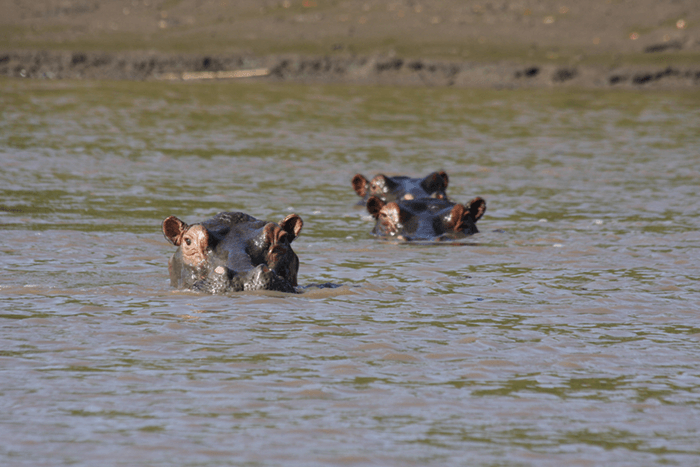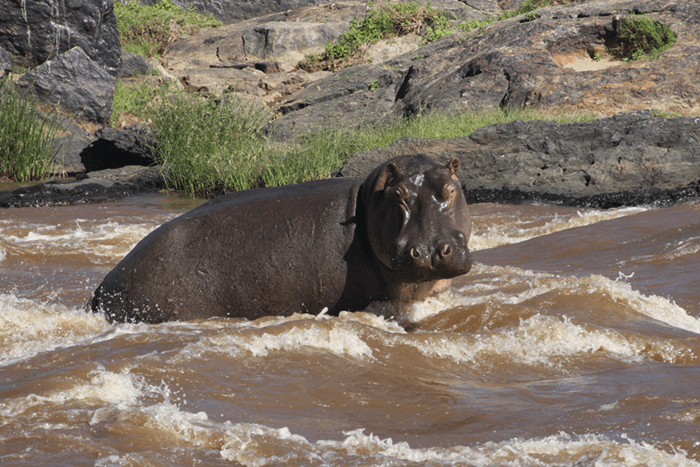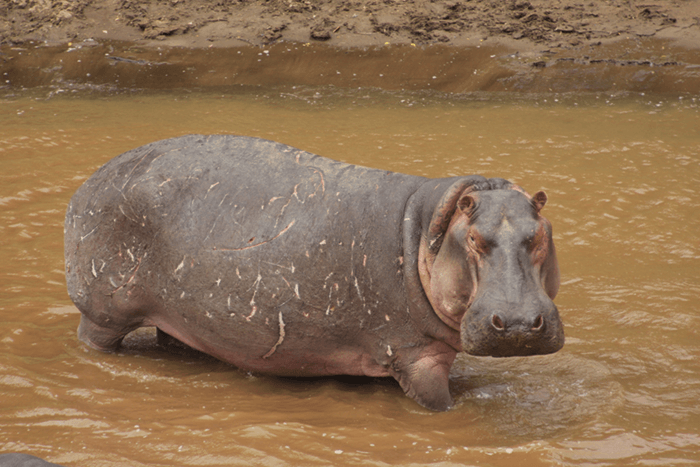Chris Dutton and Amanda Subalusky first started working on the Mara River in 2008, participating in an environmental flow assessment to determine the amount of water that needs to stay in the river to keep the ecosystem functioning. As part of the project, they spent a year doing intensive water quality and macroinvertebrate sampling throughout the basin. They first realized that something weird was going on in the river when they installed a water quality sonde that measured dissolved oxygen to look at the fluxes of sediment. “We noticed that there were some extreme drops in dissolved oxygen during some flood events and that, sometimes, there would be a massive fish-kill event. We began to wonder if the resident population of hippos had something to do with it,” says Dutton.



They began with a few small experiments to see what effect hippo waste has on oxygenated water, before scaling up to a large experimental stream array and ultimately to an entire ecosystem manipulation. “We ended up experimentally flushing a hippo pool to understand the mechanisms responsible… And with the experimental evidence, coupled with the modeling and in-situ data, it became pretty clear that the flushing of hippo pools was responsible for the crashes in dissolved oxygen,” he says. A variety of methods were used to tease apart the detailed biogeochemistry of these events, says Dutton: “We measured BOD (biochemical oxygen demand) using short-term incubations in bottles and physicochemical parameters (dissolved oxygen, temperature, pH, ORP, conductivity, turbidity) in-situ using a large water quality sonde. We captured samples using automated loggers and analyzed them on a custom-built flow injection analyzer. We measured the stratification of hippo pools using a custom-built remote-controlled boat and a custom-built conductivity logger.” They also used a spectrophotometer to measure the amount of hydrogen sulfide and ferrous iron in samples, and captured samples of methane, carbon dioxide and nitrous oxide using evacuated exetainers before analyzing those samples in the lab using GC. “It is really hard to do good science in the bush!” says Dutton. They confirmed that in a natural river with a large population of resident hippos, the amount of fecal matter generated is enough to cause frequent crashes in dissolved oxygen during floods. Hippos 1, Fish 0.
However, this doesn’t mean we’re up the proverbial creek without a paddle, says Dutton. “Increasing habitat heterogeneity due to these hypoxic episodes could increase biodiversity in the river system – as it results in spatial variation in physicochemical conditions that affect aquatic animal communities.” Next, to understand the detailed biogeochemical and microbial dynamics, the team will be taking a deep dive (“only figuratively!”) into the hippo pools themselves to understand how they transition from aerobic to anaerobic states. But for now, it’s a good job there’s plenty more fish in the sea…
References
- CL Dutton et al., “Organic matter loading by hippopotami causes subsidy overload resulting in downstream hypoxia and fish kills”, Nat Commun, 9, 1951–1960 (2018).




